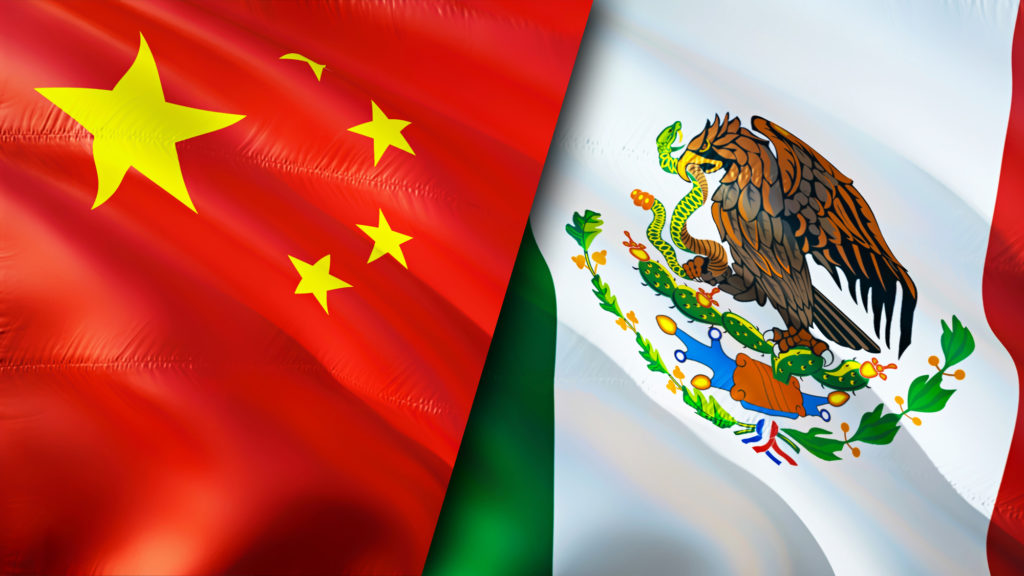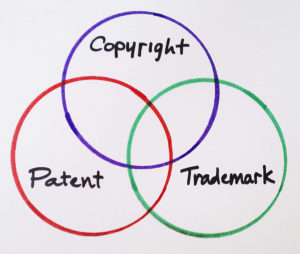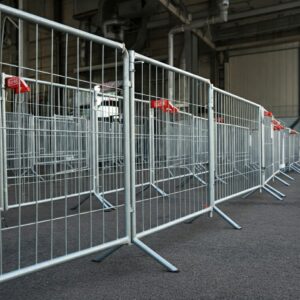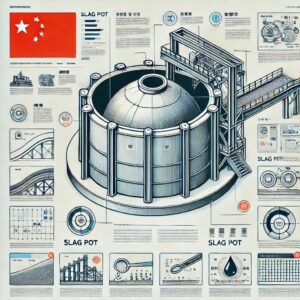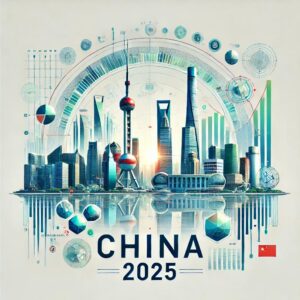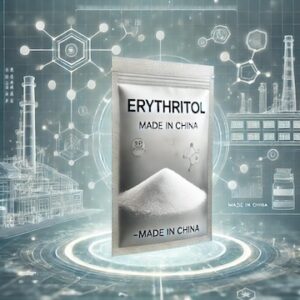Increasing enmity between China and the West, stemming from China’s increasingly aggressive actions regarding Taiwan, China’s COVID-zero policy and a whole host of other issues facing foreign companies that do business in or with China, has caused foreign companies that do business in or with China to reassess. See Nancy Pelosi’s Visit to Taiwan is Really Bad for Your China Business and Sourcing Product From China Just Got Even Riskier.
With all that has been happening, the international manufacturing lawyers at my firm have been seeing an uptick in phone calls and emails from companies looking to leave China. Most of these companies are want to know more about Mexico.
I asked my good friend Andrew Hupert to explain what is involved in moving manufacturing from China to Mexico, in large part by comparing the two countries. I chose Andrew for this near-Herculean task because he has spent so much time in both countries navigating their manufacturing systems from the inside. My law firm frequently consulted with Andrew when we first started doing China legal work in a big way and at that time Andrew was living in China. Though Andrew had for decades tied his life and career to China, like me, he was one of the early proponents of a post-China manufacturing world. So much so that Andrew moved to Mexico, reinvigorated his Spanish language skills and began helping companies — especially companies looking to leave China — navigate Mexico. Who better, then, to write about what it takes to leave China (in whole or in part) for Mexico than Andrew Hupert? The below is part three of what will be a long-running series.
Over to Andrew for Part 3. . . .
This week we’re continuing our discussion comparing China and Mexico as supply chain hubs from the perspective of China managers. My first post in this series, The China Manager’s Guide to Mexican Operations, sought to answer the questions I’ve been getting from China managers about Mexico. In my second post, China vs. Mexico as Supply Chain Hubs, I took a top-down approach, focusing on business environments. Today, let’s look inside the operation to identify three key differences in how supply chains are managed in China versus Mexico.
Takeaway: Successful China operations have always been fairly autonomous, separated from their United States headquarters by an 8-12 hour time difference and typically led by highly paid, powerful Country Heads. For international supply chains, Mexico’s IMMEX/maquiladora production facilities are essentially extensions of their U.S. parent companies.
The output from a Chinese factory and a Mexican factory may be identical, but the operations and systems involved in running the facilities couldn’t be more different. China, by virtue of language, culture, law, custom, and physical distance, requires a more autonomous approach to management. U.S.-based MNCs like hiring experienced bilingual Chinese-Americans to head their PRC operations, while European firms prefer putting their own people on the ground for relatively long postings (where the expectation was that they would learn Mandarin). Everyone involved in the China business knew the phrase TIC (This Is China) – and the implication that management practices weren’t transferable.
In Mexico, manufacturing centers along the border are typically extensions of their U.S.-based parent companies. Mexico’s economic activity is focused along the northern border, in the Mexico City area and some other key regions in the country like El Bajio in central Mexico. Mexico’s maquiladora/IMMEX factory system was designed with the intent of creating a low-cost, low-tax method for U.S. automakers to access Mexican labor. Setting up and operating factories in Mexico is a completely different process than in China. The good news is that it is much more closely integrated with the company’s chains of command that you are already familiar with. The bad news? Less of a local market to access (as compared to Asia), and a greater emphasis on doing things “the right way” (i.e. Toyota Production System). You should also be warned that China is home to many more types of industrial centers and manufacturing clusters than Mexico. If you are involved in auto, aero, or labor-intensive manufacturing, Mexico is for you. If you are doing high-tech manufacturing, require highly automated processes, or want to access markets in Asia, China remains hard to avoid. See e.g., Foreign businesses want out of China. But breaking up may be tougher than ever. Just prepare for scenario in which output from China cannot be legally or economically shipped to the United States due to logistic impediments or adverse regulation/enforcement.
The three main differences between China and Mexico supply chain operations are the following:
1. China operations are “force multipliers”. Mexican ops are “power projection”.
2. Time Zones & Length of Posting
3. Business culture +
Let’s look at each of these in more detail.
A. Your Supply Chain: Force Multiplier vs. Power Projection
China operations typically function as separate, largely self-contained power bases. They can be considered “force multipliers” because each China operation can create new facilities, networks, partnerships and even product lines. No one from headquarters could work there – and they probably couldn’t even tell a taxi driver where the factory was. YUM!’s Pizza Hut and KFC operations are prime examples. Not only were the products and layouts different in China, but management was so independent of HQ that the Chinese part of the company was spun off in 2016.
Mexico operations are typically projections of power by the U.S.-based company. The factories and facilities in Mexico are as closely integrated with their U.S. corporate parents as possible. It is not uncommon for a U.S. manager to have teams in both the U.S. and Mexico — and vice versa. The IMMEX program could have been written by Ford’s CFO staff, it is so beneficial to U.S. companies. Mexican factory workers and managers are comfortable working for U.S. brands, and they are proud of the jobs they do.
Takeaway: Will your network of suppliers and service providers transfer with you from China to Mexico? It’s not crazy to think that someday it might, if the Spanish language headlines about Chinese investment in LatAm are to be believed. For now, though, small- and medium-sized players need to figure out how to break into the Mexico-based international supply chain. If you work for a large MNC – you have to make the move internally, because your company undoubtedly has a presence in Mexico. U.S.-based China experts are going to have a lot of time on their hands.
B. Time zones & Frequent Fliers
China sits at the center of an entirely separate market. Though the inexorable forces of Classic Globalism may have homogenized how production, management, and finance are done all over the world, consumer markets remain somewhat fragmented (in a good way, for MNCs). Trends and fashions shift between Korea, Japan, China, Taiwan — and now SE Asia is starting to show influence of its own. Half the reason to go to China in the first place was to access new markets. If you don’t have a presence in Asian markets, you can’t expect to profit from Asian markets.
Back in America, it is hard to overstate how closely the U.S. and Mexican economies are integrated, at least as far as manufacturing and logistics go. The auto parts factories in Saltillo are three hours from the U.S. border. I’ve been spending a lot of time lately in Saltillo and I hear this 2-3 times every day. Mexico has three time zones: Central Daylight Time (CDT), Mountain Daylight Time (MDT), Pacific Daylight Time (PDT). This means real-time management and no more games of 12-hour-delay phone tag. Mexican IMMEX factories are part of the U.S. operation.
Takeaway: Expat managers have completely different experiences in China and Mexico. If you are based in the Southwest U.S., you can fly into your Mexico meeting in the morning and conceivably be home that night. No 14-hour flights, no 30-day quarantine, no jet lag. Managing in China is getting more and more difficult for westerners, and that trend is not showing signs of improving. But as Chinese industry and infrastructure push south in Thailand, Vietnam, and the rest of ASEAN, marketers with global ambitions simply can’t say no to China.
C. Culture Plus
Culture and economic spheres of influence are becoming increasingly important. As “decoupling” transforms into culture drift, look for Asian markets to play an even more decisive role in company strategy. If you are a marketer who subscribes to the Asian Century model, then you need a presence in China (and probably half a dozen non-Chinese cities).
Mexico is not only linked closely to U.S. culture at the national level, its economy is closely integrated with U.S. industry. IMMEX is basically a tax-avoidance strategy for U.S. brands. Don’t let the cable news headlines about immigration or cartel violence unduly influence your business decisions. The 2,000-mile U.S.-Mexico land border is a key advantage, but the strategic links between U.S. and Mexico are ultimately the most important factors in the business environment. Production costs, labor costs, land costs (and availability), logistics, and customs and regulations are the data points you should be collecting and analyzing.
Takeaway — In a perfect world, you’d be able to tailor your production and marketing strategy to meet the needs of both B2B and B2C customers. Some of you, though, have some tough “either-or” decisions. If you want to market in Asia, you have to be in Asia and that probably means having some sort of presence in China. But if you are serving the U.S. market, shipping from China is rapidly becoming a nearly insurmountable barrier and an incalculable risk. See What China’s Taiwan Lust Will Mean for YOUR Business: A September 7 Event. Christmas 2022 is going to be make-or-break for consumer brands. If there are empty shelves on November 25, the China production model is truly and decidedly broken.
D. Final Word
China used to be the simple answer to just about every business question. Production, B2B markets, consumer brands, sourcing, or raw materials. China not only had it these things, but it offered them on the best imaginable terms. Now that China and the U.S. are decoupling, you have some decisions to make. See Preparing for China Decoupling Should Start NOW.
First, can you afford two completely separate operations — one in China, and one in Mexico?
Second, are you prioritizing the U.S. market or the Asian market? What will you do if there are regulatory or technical impediments to operating in two markets at once?
Third, will your business model work in Mexico?
Now is the time to start answering these questions and getting ready for the next phase of international trade.
Andrew Hupert lives and works in Mexico where he helps international businesses get their supply chains under control. After over 20 years in Asia (Shanghai, Taipei, HK, Saigon), Andrew decided to follow his own advice and move his operations closer to home. He is now based in Saltillo, Coahuila, the ‘Detroit of Mexico’, where he shows companies how to expand or adjust their supply chains for 2023 and beyond. He sums up his new effort very simply: “Bosses who don’t control their supply chains and sourcing don’t control their own business.” Contact Andrew Hupert to talk about the future of your supply chain: Andrew@JLAsociados.com.mx , or connect on LinkedIn.










